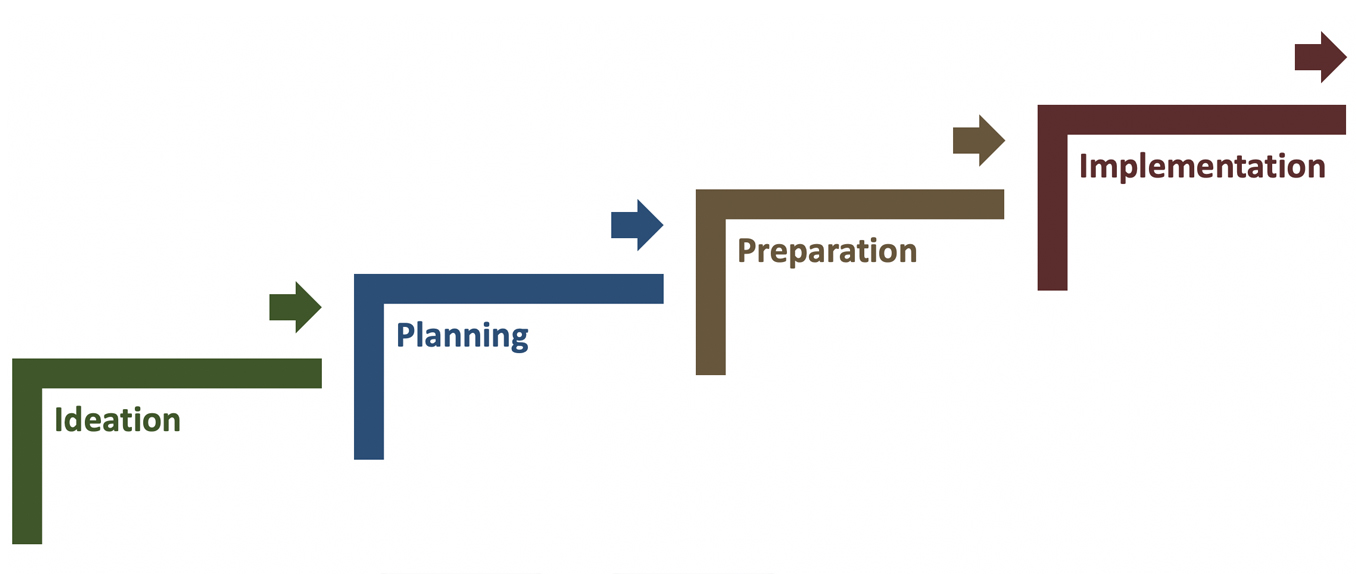TxSSC
School Behavioral Threat Assessment Toolkit
7.0 How Threat Assessment Works: Understanding the Pathway to Violence
The following graphic illustrates the “pathway to violence” typically taken by those who have engaged in school shootings and other acts of targeted violence: they start with an idea to do harm, develop a plan to carry it out, prepare by acquiring the means or capacity to do harm, and then implement the violent act.

Elaborating on the steps along the path:
Ideation: Expressing thoughts or fantasies considering the use of violence to address a real or perceived grievance, threat, or provocation. Note that many people have occasional or fleeting thoughts of violence in response to perceived grievances. Most do not act on those thoughts or move forward along the pathway. Therefore, knowledge that someone is thinking about violence does not confirm that a danger exists, but should alert us to the possibility, and that the person may be struggling with a grievance of some sort or otherwise considering violence as a way to solve a problem.
Planning: Giving thought and consideration not only to the idea of committing violence, but the who, what, when, where and how of doing so. Expressions may begin to reference timing, location, targets, means, methods, etc. The person of concern may seek out and gather information regarding prior shootings or shooters, information about potential targets, means of causing harm, tools needed, etc.
Preparation: Beyond just acquiring weapons, this stage involves attempts to prepare for the violence and to develop or acquire the means and methods to engage in harm to target(s) or victim(s). The person of concern may try to obtain the means to fulfill their plans (e.g., weapons, tools, particular clothing, etc.) They may adjust plans if they encounter barriers or see opportunities that support their violent ideas and plans. They may also test boundaries to practice accessing secure areas.
Implementation: The person of concern moves to carry out the violent plan.
Research indicates that while targeted violence incidents are rarely spontaneous and impulsive, they can escalate rapidly from ideation through implementation. This may be expedited by a sense of desperation for resolution, lack of concern for consequences, or the influences of others encouraging escalation (e.g., through social media or direct communications). When there are indications that a person of concern may pose a threat to the school community, the threat assessment team will need to move quickly to intervene.
Implications for Prevention
Many school shootings and other acts of targeted violence are preventable. The challenge is that, while pieces of the puzzle are usually available, the information is likely to be scattered and fragmented. When a threat is reported, a multi-disciplinary threat assessment team can act quickly to assemble the facts to determine if the person of concern is on the pathway to violence, and to work with them to solve underlying problems and move them away from thoughts and/or plans of violence.